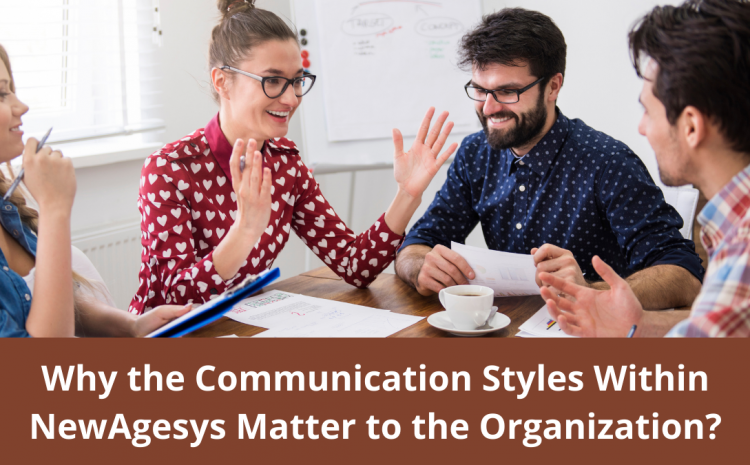
Why the Communication Styles Within Newagesys Matter to the Organization?
Your workplace is without question the one point in life where you are thrown together with people from all walks of life. The place you work at may have people belonging to or brought up in different states, people of different cultures, religions, and even nationalities. Therefore, communication is the key for any company to succeed and work with its optimal productivity rate.
Workplace diversity is so intricate that even people who may seemingly live the same or very similar lives may have polar opposite personalities from each other. While many of your employees may turn towards facts and figures, the others may base their decision on personal experiences or even relationships. All these factors may create a potential communication gap between your employees.
As a software development company, NewAgeSys has made it a point to understand the different communication styles that exist within the company. The employees working at NewAgeSys have rather seamless communication within the walls of the company. In this article, we discuss the different communication styles of the employees working at NewAgeSys and how it matters to the organization.
Analytical Communication Style
Analytical communication style is rather common in almost every workplace and can even be called the predominant ones in many workplaces. It is a communication style that prefers numbers, real data, and descriptive facts. We also have people who prefer the analytical communication style working at NewAgeSys. The people who have such communication preferences often find it skeptical about trusting people who do not rely on the numbers and known facts.
The best thing about people who practice analytical communication is that they tend to be logical in most situations, which helps them come up with practical solutions to a problem. Given the fact that they do not let their feelings cloud their judgment, most of the time shows us that they can be trusted to make hard decisions. The only considerable downside is that such personalities may come across as rather cold to others and may not be encouraging towards creative solutions.
Intuitive Communication Style
People following an intuitive communication style often tend to have a straight-to-the-point kind of attitude. As such, they expect the same from others as well and would prefer not to have to communicate unless they are directly involved or are interested in the problem you are facing.
They expect others to be concise about their communication as well so that they can get the most information that they can easily understand. Once they have the required information, they immediately proceed to come up with a simple solution and may at times come across as a know-it-all even when they are just passionate about what they do.
Functional Communication Style
The functional communicator may very well be called the opposite of what an intuitive communicator is, and they rely deeply on the small details and stepped process rather than on intuition. The functional communicator enjoys planning and knowing exactly what to do beforehand.
While the intuitive type of people can be quick about coming up with their solutions, they are not necessarily right, whereas the functional communicator analyzes the problem in a more detailed manner and often comes up with a more reliable and well throughout solution.
Personal Communication Style
Unlike the others we have discussed so far, their emotions and personal connections often drive the people who exhibit a personal communication style. They are genuinely interested in the people they work with and take an interest in knowing them personally. Such people can be extremely useful in times of conflicts between two other people working in the same company.
How The Different Communication Styles Influence an Organization
It is essential that you learn about your workplace’s different communication styles if you want to get the most out of your employees and their work. Some of the ways it can help you include the following:
- Identify the communication gaps in the organization and fix them.
- Provide the right training and resources based on their unique needs.
- Improved communication helps promote inclusivity & cooperation.
- Better communication leads to better transparency and trust between the company personals.


